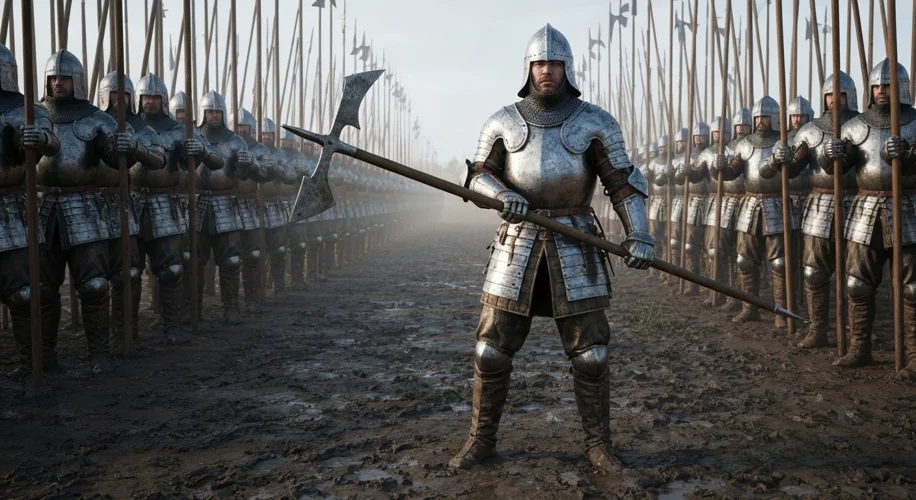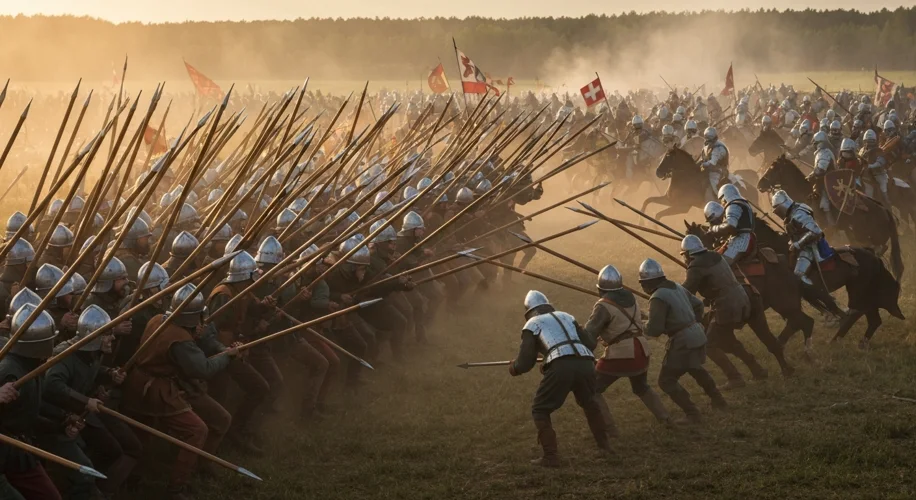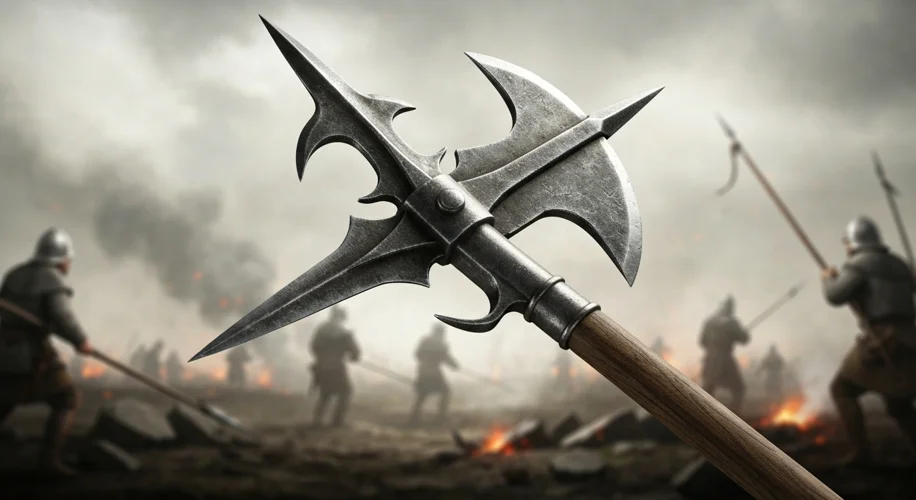The clang of steel on steel, the guttural cries of men locked in brutal combat, the dust and mud churned underfoot – these were the hallmarks of medieval European warfare. Amidst the chaos, a weapon of formidable versatility emerged, becoming the bane of armored knights and a symbol of infantry power: the halberd.
Imagine a soldier, perhaps a burly Swiss pikeman or a disciplined German Landsknecht, gripping a weapon nearly twice his height. At its head, a terrifying fusion of polearm technologies: an axe blade for cleaving, a spear point for thrusting, and a hook for pulling, tripping, or disarming.

Before the halberd’s ascendancy, infantry tactics often struggled against the shock of charging cavalry. Spears and pikes offered reach but lacked the cutting power against armored foes. Swords were excellent in close quarters but offered little defense against a mounted onslaught. The halberd, however, offered a multi-faceted solution, a veritable Swiss Army knife of medieval destruction.
Its origins can be traced back to the 14th century, evolving from simpler polearms. By the 15th and 16th centuries, it had become the quintessential infantry weapon, particularly favored by the Swiss, who turned their formidable pike formations into even more potent forces with the halberd’s inclusion. These men were not mere peasants conscripted into battle; they were highly trained professionals, disciplined and drilled to perfection. Their lives revolved around mastering this weapon, understanding its every nuance.
A soldier wielding a halberd needed more than brute strength. He required a keen understanding of battlefield positioning, the ability to coordinate with his comrades, and the dexterity to utilize the weapon’s diverse functions. The axe could bite through mail and even dent plate armor. The spear tip could pierce vital organs or find gaps in a knight’s defenses. The hook, often overlooked but deadly, could unseat a rider from his horse, pull a pikeman off balance, or even disarm an opponent in the melee.
The Battle of Marignano in 1515 is a prime example of the Swiss halberd’s impact. Faced with a formidable French army including experienced cavalry and artillery, the Swiss infantry, armed with their pikes and halberds, fought with incredible ferocity. While ultimately outmaneuvered and suffering heavy losses, their ability to stand against the French onslaught and inflict severe damage showcased the evolving power of well-trained infantry armed with superior weapons.

However, the halberd’s reign was not eternal. The rise of firearms, particularly the arquebus and later the musket, began to render polearms obsolete on the battlefield. The sheer destructive power and range of gunpowder weapons meant that infantry no longer needed to close the distance to engage the enemy effectively. By the late 17th century, the halberd, once the symbol of the common soldier’s might, began to fade into ceremonial use.
Yet, the halberd’s legacy is undeniable. It represents a pivotal moment in military history, a testament to human ingenuity in the face of evolving threats. It empowered the common soldier, allowing them to challenge the dominance of armored cavalry and play a more decisive role on the battlefield. The soldiers who wielded these weapons were not just fighters; they were craftsmen of war, their lives intertwined with the deadly reach of their formidable tools.

The story of the halberd is a microcosm of warfare’s constant evolution. It reminds us that even the most fearsome weapons can be rendered obsolete by the relentless march of technology. But for a crucial period in history, the halberd reigned supreme, a gleaming symbol of infantry power, wielded by brave men who carved their place in the annals of warfare.

